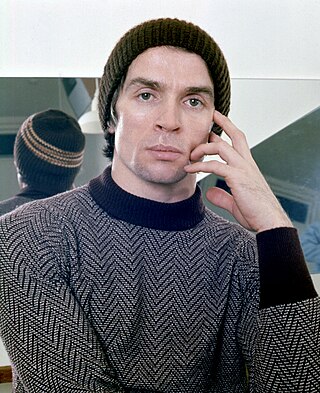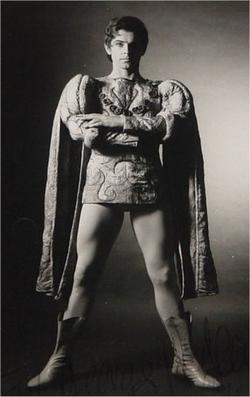
Rudolf Khametovich Nureyev was a Soviet-born ballet dancer and choreographer. Nureyev is widely regarded as the most preeminent male ballet dancer of his generation as well as one of the greatest ballet dancers of all time.

Dame Margaret Evelyn de Arias DBE, known by the stage name Margot Fonteyn, was an English ballerina. She spent her entire career as a dancer with the Royal Ballet, eventually being appointed prima ballerina assoluta of the company by Queen Elizabeth II.

The Royal Ballet is a British internationally renowned classical ballet company, based at the Royal Opera House in Covent Garden, London, England. The largest of the five major ballet companies in Great Britain, the Royal Ballet was founded in 1931 by Dame Ninette de Valois. It became the resident ballet company of the Royal Opera House in 1946, and has purpose-built facilities within these premises. It was granted a royal charter in 1956, becoming recognised as Britain's flagship ballet company.

Natalia Romanovna Makarova is a Russian prima ballerina and choreographer. The History of Dance, published in 1981, notes that "her performances set standards of artistry and aristocracy of dance which mark her as the finest ballerina of her generation in the West."

Sir Kenneth MacMillan was a British ballet dancer and choreographer who was artistic director of the Royal Ballet in London between 1970 and 1977, and its principal choreographer from 1977 until his death. Earlier he had served as director of ballet for the Deutsche Oper in Berlin. He was also associate director of the American Ballet Theatre from 1984 to 1989, and artistic associate of the Houston Ballet from 1989 to 1992.

Alessandra Ferri OMRI is an Italian prima ballerina. She danced with the Royal Ballet (1980–1984), American Ballet Theatre (1985–2007) and La Scala Theatre Ballet (1992–2007) and as an international guest artist, before temporally retiring on 10 August 2007, aged 44, then returning in 2013. She was eventually granted the rank of prima ballerina assoluta.
Sir Anthony James Dowell is a retired British ballet dancer and a former artistic director of the Royal Ballet. He is widely recognized as one of the great danseurs nobles of the twentieth century.
L'histoire de Manon, generally referred to as Manon, is a ballet choreographed by Kenneth MacMillan to music by Jules Massenet and based on the 1731 novel Manon Lescaut by Abbé Prévost. The ballet was first performed by The Royal Ballet in London in 1974 with Antoinette Sibley and Anthony Dowell in the leading roles. It continues to be performed and recognised internationally.
Dame Merle Park, is a British ballet dancer and teacher, now retired. As a prima ballerina with the Royal Ballet during the 1960s and 1970s, she was known for "brilliance of execution and virtuoso technique" as well as for her ebullience and charm. Also admired for her dramatic abilities, she was praised as an actress who "textured her vivacity with emotional details."

Lynn Seymour was a Canadian-born ballerina, mostly associated with the Royal Ballet in London. She was a muse of choreographer Kenneth MacMillan, creating lead roles in Romeo and Juliet, The Invitation, Concerto, Anastasia and Mayerling, among others. She originated lead roles for several ballets by Frederick Ashton, including The Two Pigeons, Five Brahms Waltzes in the Manner of Isadora Duncan and A Month in the Country. She also guested with various ballet companies throughout her life.
Wayne Eagling is a Canadian ballet dancer, now retired. After more than twenty years as a popular member of The Royal Ballet in London, he became well known as an international choreographer and company director.
David Blair was a British ballet dancer and a star of England's Royal Ballet during the 1950s and 1960s.
Maryon Lane was a South African ballet dancer who became well known in Britain as a ballerina of the Sadler's Wells Theatre Ballet and as a soloist with the Royal Ballet.

Georgina Parkinson was an English ballet dancer and ballet mistress. She joined The Royal Ballet in 1957 and was promoted to principal dancer in 1962. Best known for dancing 20th-century works, she was a frequent collaborator of choreographer Kenneth MacMillan, and had also created roles for Frederick Ashton. In 1978, she accepted the invitation to become a ballet mistress at the American Ballet Theatre for a year, before assuming the position permanently in 1980. She also performed character roles with the American Ballet Theatre.

Derek Rencher was a British ballet dancer. A commanding figure among Royal Ballet character dancers for more than four decades, he was probably the most prolific performer in the company's history.
Requiem is a one-act ballet created by Kenneth MacMillan in 1976 for the Stuttgart Ballet. The music is Gabriel Fauré's Requiem (1890). The designer was Yolanda Sonnabend, who had first collaborated with him on 1963's Symphony.
Concerto is a one-act ballet in three movements created by Kenneth MacMillan in 1966 for the Deutsche Oper Ballet. The music is Dmitri Shostakovich's Second Piano Concerto (1957). The ballet premiered on 30 November 1966.
Anastasia is a ballet created by Kenneth MacMillan. The first version in one act was premiered in 1967 by the Deutsche Oper Ballet. In 1971 MacMillan expanded the work to three acts for the Royal Ballet; the original one-act version became the final act of the 1971 work.
Rudolf Nureyev's production of Sergei Prokofiev's Romeo and Juliet premiered at the London Coliseum on 2 June 1977.
William Bracewell is a Welsh ballet dancer. He joined the Birmingham Royal Ballet in 2010, and was named soloist in 2014. In 2017, he joined the Royal Ballet in London, and was promoted to principal dancer in 2022. He is the first Welsh person to hold the position.